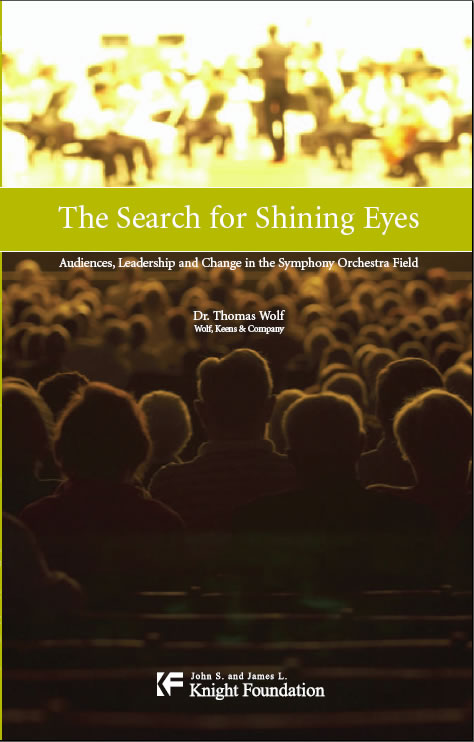INITIATIVE DESCRIPTION
Besieged in the early 1990s by requests for emergency funding to “save our symphony,” Knight decided to tackle symphonies’ systemic problems head-on by encouraging them to be more entrepreneurial with their audiences. In 1992, Knight created a $5.4 million, five-year initiative to build the connection between orchestras and their audiences. In 1999, the foundation approved a second phase, expanding the program to a total of $13 million over 12 years.
ASSESSMENT PURPOSE & APPROACH
Key Questions:
- What were the results of Phase I of the program, premised on building new audiences by transforming the concert hall experience?
- How did the methodology and rigor of Phase II differ from Phase I?
- What long-held myths did the Magic of Music dispel, what new ways of doing business and additional funding did it foster and what programmatic experimentation and joint activities were encouraged?
- What were the top lessons learned for both orchestras and funders?
Approach: Insights were gained from quarterly reports starting in September, 2000, audience and participant surveys, event observations, ticket sales data, interviews with musicians, staff conductors and board members and analysis of Knight Foundation’s archives.
Assessment Partners: This report was produced by Dr. Thomas Wolf of Wolf, Keens & Company.
PROJECT FINDINGS
- Flawed Design – Mid-way evaluation determined that the “shining eyes” theory that transformations in concert hall experience would reinvigorate the relationship of orchestras with their audience was too simplistic, as most outcomes from initial grants were less than transformational.
- Redesign – The Knight study, “How Americans Relate to Classical Music and Their Local Orchestras,” offered new motivations for guiding strategy. Research into the behavior of arts consumer resulted in greater understanding of audiences and concert hall innovations.
- Orchestra Lessons Learned – The problems orchestras face stem from the delivery systems they employ. Orchestras must maintain clear, focused and achievable missions to remain relevant to their communities – especially those who do not buy tickets. Free programming and outreach does not turn people into ticket buyers, participatory music education does.
- Funding Lessons Learned – Technical assistance, research, symposia and publications can make greater contributions than dollars. Leadership and clarity with applicants and grantees is an effective approach to guiding strategic change. Evaluation and direction should be established from the start.
